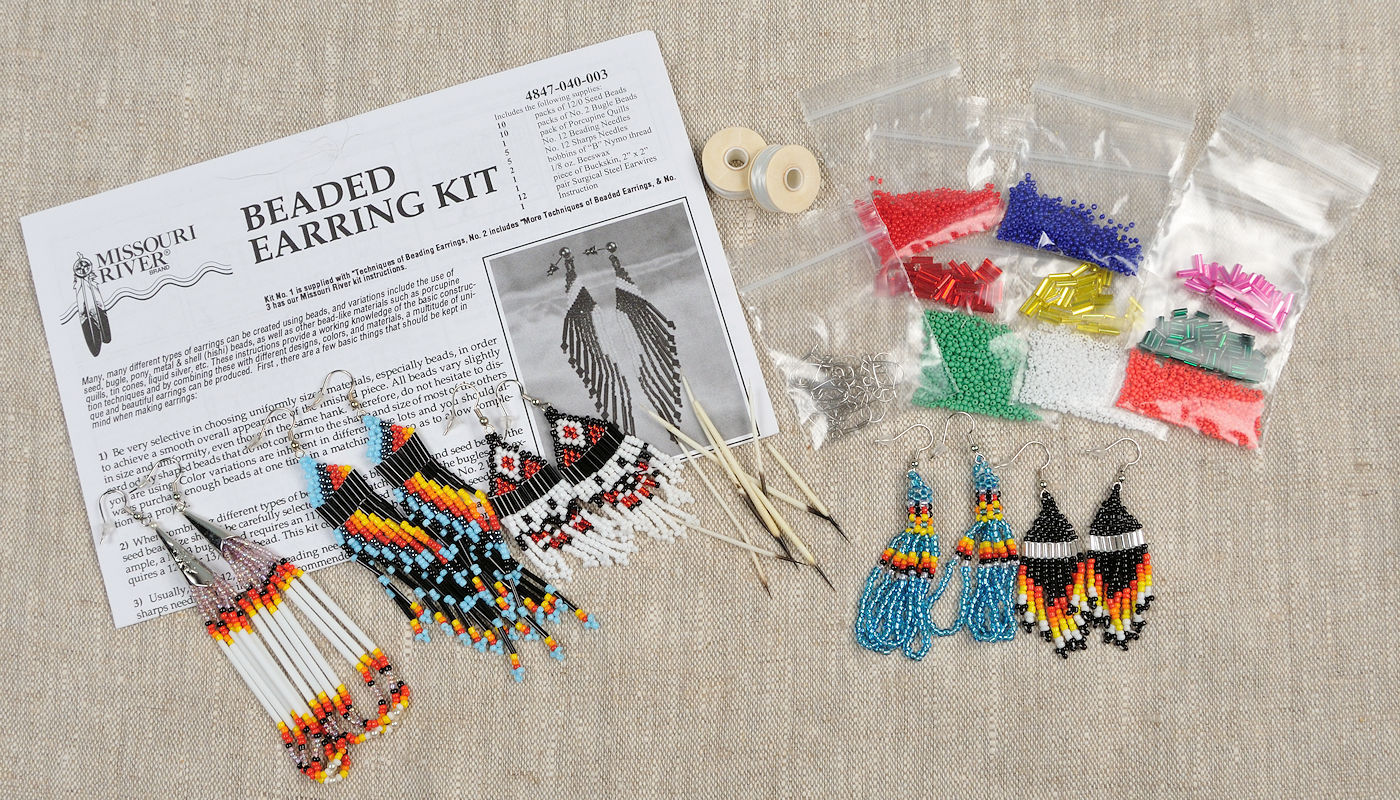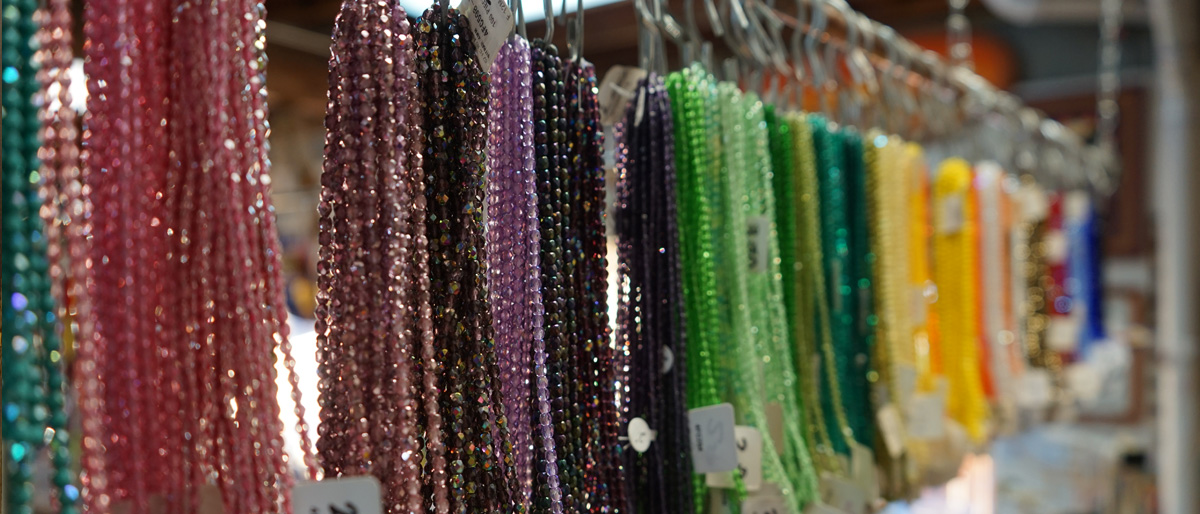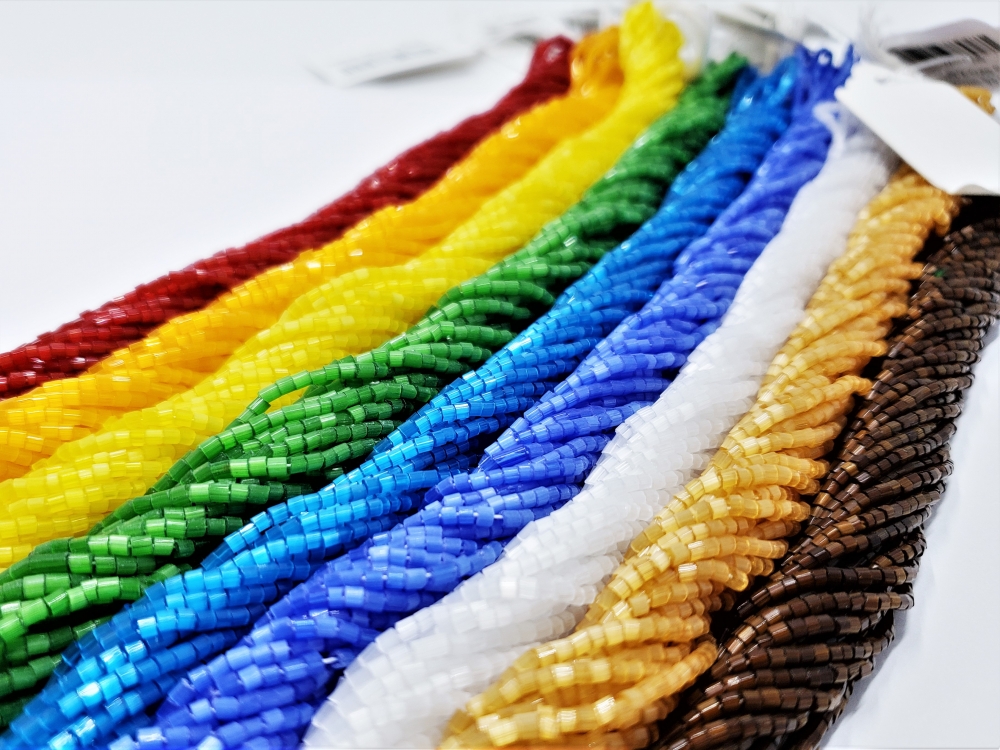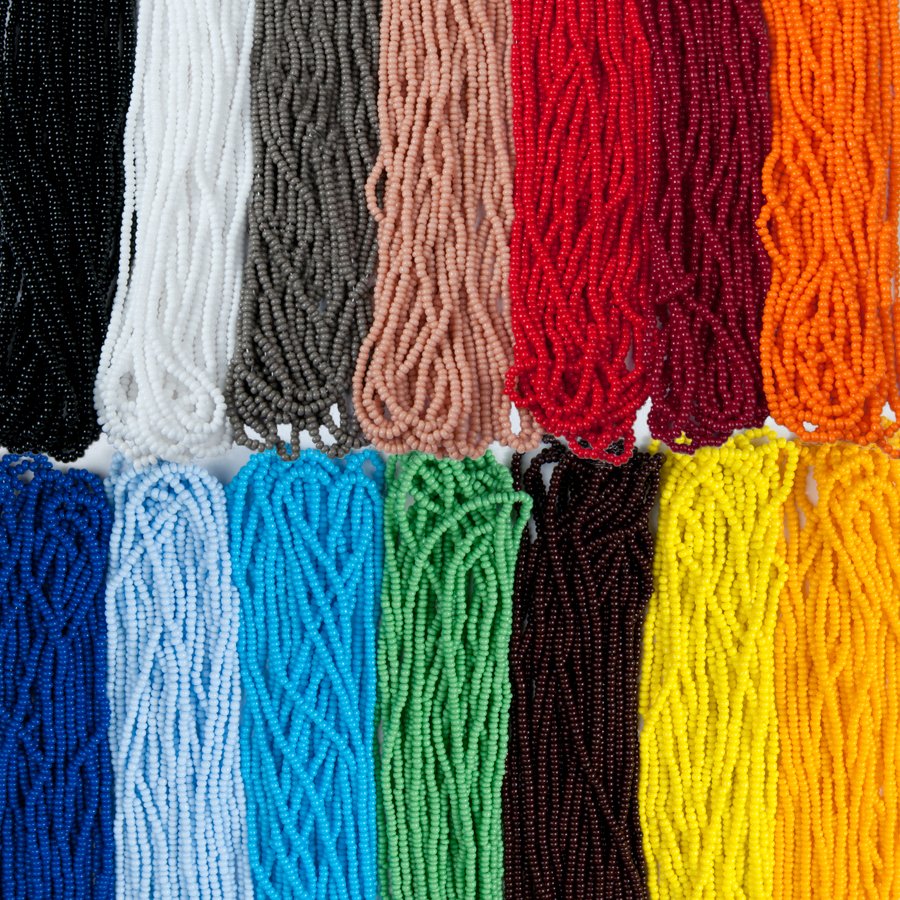Native beading is a cherished art form deeply rooted in the traditions and cultures of Indigenous communities. This intricate craft involves the use of various beads and materials to create stunning pieces of jewelry, clothing, and decorative items. Consequently, understanding the essential supplies for native beading is key for both beginners and experienced artisans. Therefore, this comprehensive guide explores the different types of beads, tools, and additional materials required for native beading. By delving into these aspects, you can gain a deeper appreciation of this beautiful craft and enhance your own beading projects.
Types of Beads for Native Beading
Beads are the cornerstone of native beading, and choosing the right ones is crucial for creating authentic and beautiful designs. Understanding the different types of beads helps you select the best materials for your projects. Therefore, exploring various types of beads is essential.

Glass Beads
Glass beads are a popular choice in native beading due to their vibrant colors, durability, and affordability. These beads come in various sizes, shapes, and finishes, making them versatile for different designs. Some common types of glass beads include seed beads, bugle beads, and pony beads. Seed beads, in particular, are widely used in many native beading projects due to their small size and uniform shape. By understanding the benefits of glass beads, you can effectively incorporate them into your beading projects. Therefore, recognizing their versatility is crucial.
Natural and Semi-Precious Stone Beads
Natural and semi-precious stone beads add a unique and earthy touch to native beading. Stones such as turquoise, jade, and amber are often used to create stunning and meaningful designs. These beads come in various shapes and sizes, providing a range of options for artisans. The natural variations in color and texture make each bead unique, adding depth and character to your work. By understanding the value of natural and semi-precious stone beads, you can enhance the authenticity and beauty of your beading projects. Therefore, recognizing their significance is essential.
Shell and Bone Beads
Shell and bone beads are traditional materials used in native beading, reflecting the connection to nature and heritage. Shell beads, such as mother-of-pearl and abalone, offer iridescent qualities that add shimmer to designs. Bone beads, often carved or etched, provide a rustic and organic feel. These materials are particularly valued for their cultural significance and natural beauty. By understanding the importance of shell and bone beads, you can honor traditional beading practices in your work. Therefore, recognizing their cultural value is crucial.
Essential Tools for Native Beading
Having the right tools is essential for successful native beading. These tools help you achieve precision and efficiency in your projects. Therefore, exploring the essential tools for native beading is critical.

Needles
Beading needles are a fundamental tool for native beading, used to thread beads and create intricate patterns. These needles are typically thin and flexible, allowing them to pass through small bead holes easily. Different sizes are available, so selecting the appropriate needle for your bead size and thread type is important. Straight needles are commonly used, but curved or specialty needles can be helpful for specific techniques. By understanding the importance of beading needles, you can ensure smooth and precise work. Therefore, recognizing the value of the right needle is essential.
Thread and Beading Cord
Thread and beading cord are crucial for stringing beads and forming the foundation of your designs. Nylon thread, such as Nymo or FireLine, is popular due to its strength and durability. Beading cord, such as sinew or silk, is also used for specific projects. The choice of thread or cord depends on the type of beads used and the desired flexibility of the finished piece. Waxed thread is preferred for certain techniques to prevent fraying. By understanding the significance of selecting the right threading material, you can achieve durable and professional results. Therefore, recognizing the importance of quality thread and cord is crucial.
Pliers and Scissors
Pliers and scissors are essential tools for cutting, shaping, and securing beading materials. Round-nose pliers are ideal for creating loops and bends, while flat-nose pliers assist in gripping and manipulating beads and findings. Scissors designed for beading help cut thread and cord cleanly. Wire cutters are also useful for cutting metal findings or thicker cords. By understanding the necessity of pliers and scissors, you can efficiently handle various components and achieve precise work. Therefore, recognizing the importance of these tools is essential.
Additional Materials for Native Beading
In addition to beads and tools, several other materials play a vital role in native beading. These materials enhance the functionality and aesthetics of your projects. Therefore, exploring these additional materials is essential.

Findings and Clasps
Findings and clasps are essential components used to complete jewelry pieces, ensuring they are wearable and functional. Common findings include jump rings, crimp beads, and earring hooks. Clasps, such as lobster clasps, toggle clasps, and hook-and-eye closures, secure necklaces and bracelets. Choosing the right findings and clasps enhances the durability and appearance of your pieces. By understanding the importance of these components, you can create polished and professional jewelry. Therefore, recognizing the value of quality findings and clasps is crucial.
Beading Mats and Boards
Beading mats and boards provide a workspace that helps organize and stabilize beads during the beading process. Beading mats, often made of soft, non-slip material, prevent beads from rolling away and offer a smooth surface for arranging patterns. Beading boards, typically with grooves or compartments, assist in measuring and laying out designs before stringing. These tools help streamline your workflow and reduce frustration. By understanding the benefits of beading mats and boards, you can enhance your efficiency and creativity. Therefore, recognizing the importance of an organized workspace is essential.
Bead Organizers and Storage
Effective organization and storage of beads and supplies are crucial for maintaining an efficient and enjoyable beading process. Bead organizers, such as trays, boxes, and containers, help keep beads sorted by size, color, and type. Stackable and compartmentalized storage solutions maximize space and facilitate easy access to materials. Proper storage prevents beads from mixing and getting lost, saving time and effort. By understanding the value of bead organizers and storage, you can maintain an orderly and productive workspace. Therefore, recognizing the importance of organization is essential.
Benefits of Native Beading
Native beading offers numerous benefits, enriching the lives of those who engage in this art form. Understanding these advantages highlights the value of beading beyond its artistic aspects. Therefore, exploring the benefits of native beading is essential.
Cultural Preservation and Expression
Native beading serves as a means of cultural preservation and expression. This traditional craft allows artisans to connect with their heritage and convey cultural stories and symbols through their work. The use of traditional materials and techniques helps keep cultural practices alive for future generations. By understanding the cultural benefits, you can appreciate how beading supports heritage and identity. Therefore, recognizing the significance of cultural preservation in beading is crucial.
Enhancing Creativity and Skill Development
Engaging in native beading fosters creativity and skill development. The process of designing patterns, selecting materials, and executing intricate techniques challenges artisans to think creatively and problem-solve. Over time, beaders refine their skills, gaining proficiency in various methods and styles. This continuous learning and improvement can be deeply fulfilling. By understanding the creative benefits, you can appreciate how beading enhances artistic growth and skill mastery. Therefore, recognizing the importance of skill development in beading is essential.

Promoting Relaxation and Mindfulness
Native beading promotes relaxation and mindfulness, offering a meditative and calming activity. The repetitive nature of threading beads and creating patterns can induce a state of flow, reducing stress and anxiety. This focus on the present moment encourages mindfulness, allowing artisans to fully engage in the creative process. By understanding the psychological benefits, you can appreciate how beading supports mental well-being. Therefore, recognizing the value of relaxation and mindfulness in beading is crucial.
Practical Tips for Successful Native Beading
Successfully engaging in native beading involves practical tips and strategies to enhance your experience. Understanding these tips helps you navigate the challenges and enjoy the process. Therefore, exploring practical tips for successful native beading is essential.
Start with Simple Projects
For beginners, starting with simple projects helps build confidence and foundational skills. Begin with small, manageable designs such as earrings, bracelets, or keychains. These projects allow you to practice basic techniques and get comfortable with the tools and materials. As you gain experience, gradually move on to more complex and intricate designs. By understanding the importance of starting simple, you can achieve steady progress and avoid frustration. Therefore, recognizing the value of a gradual approach is crucial.
Learn from Resources and Community
Utilizing resources and connecting with the beading community enhances your learning and creativity. Books, online tutorials, and workshops provide valuable knowledge and inspiration. Joining beading groups, forums, and social media communities allows you to share experiences, seek advice, and gain support. Engaging with experienced beaders can offer insights and tips that elevate your craft. By understanding the benefits of learning from resources and community, you can enhance your beading journey. Therefore, recognizing the importance of community engagement is essential.
Practice Patience and Attention to Detail
Practicing patience and attention to detail is vital for achieving high-quality beading work. The intricate nature of native beading requires careful planning and precise execution. Take your time to ensure accurate pattern creation, bead placement, and finishing touches. Patience and meticulousness lead to professional and polished results. By understanding the importance of these qualities, you can create stunning and detailed pieces. Therefore, recognizing the value of patience and detail in beading is crucial.
Addressing Common Questions About Native Beading Supplies
Understanding common questions about native beading supplies provides additional clarity and helps navigate the craft. Knowledge of these answers ensures better preparation. Therefore, exploring common questions is essential.
What Types of Beads Are Best for Beginners?
A common question is what types of beads are best for beginners. For those new to beading, glass seed beads and pony beads are excellent choices. They are affordable, widely available, and come in various colors and sizes. Starting with these beads allows beginners to practice basic techniques and create simple designs. By understanding the suitability of these beads, beginners can confidently start their beading journey. Therefore, recognizing the importance of beginner-friendly materials is crucial.
How Do I Choose the Right Thread for My Project?
Another common question is how to choose the right thread for a beading project. The choice of thread depends on the type of beads, the desired flexibility, and the project’s complexity. Nylon thread, such as Nymo or FireLine, is versatile and strong, making it suitable for various projects. Waxed thread is preferred for certain techniques to prevent fraying. By understanding the factors influencing thread selection, you can ensure the durability and functionality of your piece. Therefore, recognizing the importance of appropriate threading material is essential.
Addressing Common Misconceptions About Native Beading
Addressing common misconceptions about native beading provides accurate information and dispels unwarranted concerns. Clearing up misunderstandings ensures an informed perspective. Therefore, exploring common misconceptions is important.

Misconception: Beading Is Only for Jewelry
A common misconception is that beading is only for creating jewelry. While jewelry-making is a significant aspect of beading, native beading extends to many other applications. Beaded designs can adorn clothing, accessories, home decor, and ceremonial items. Artisans use beading to create intricate patterns on moccasins, regalia, bags, and more. By understanding the versatility of beading, you can explore various creative avenues. Therefore, dispelling this misconception highlights the wide range of beading applications.
Misconception: Native Beading Requires Expensive Materials
Another misconception is that native beading requires expensive materials. While high-quality materials can enhance your work, it is possible to create beautiful pieces with budget-friendly options. Affordable glass beads, basic tools, and simple threads can still produce stunning designs. As skills and resources grow, investing in premium materials is a natural progression. By understanding the affordability of entry-level supplies, you can approach beading without financial barriers. Therefore, dispelling this misconception emphasizes the accessibility of beading.
Conclusion: Embracing the Craft of Native Beading
Embracing the craft of native beading involves understanding its essential supplies, tools, additional materials, and benefits. Proper knowledge of these aspects ensures a comprehensive and enjoyable beading experience.
Exploring critical elements such as bead types, tools, threading materials, and practical tips provides comprehensive knowledge and practical approaches. Recognizing the importance of addressing common questions and misconceptions enhances overall confidence and satisfaction with your beading journey.
By engaging with these elements, you can delve into the captivating world of native beading, creating authentic and expressive works of art. Therefore, whether you are a seasoned beader or a newcomer, understanding native beading supplies offers practical and valuable insights. Embrace the opportunity to explore and develop your skills, knowing you have the knowledge and resources to make informed choices for a fulfilling beading experience!
